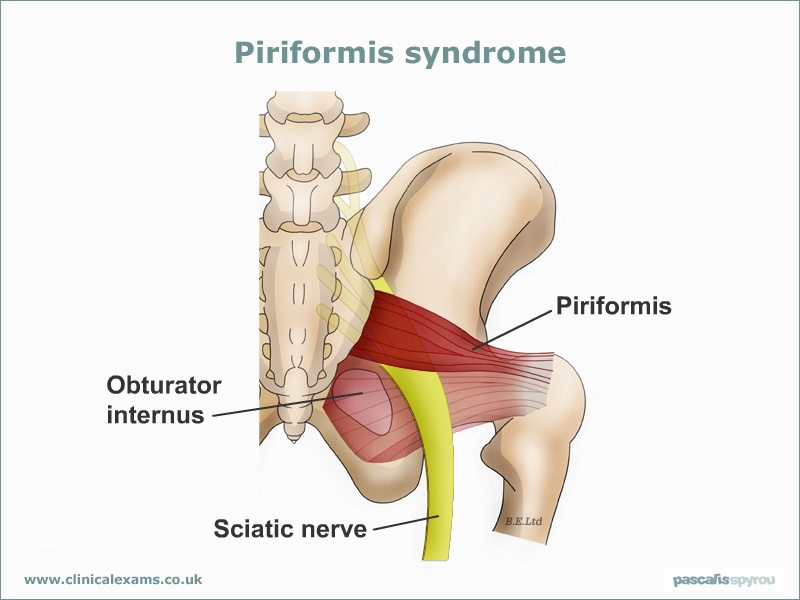Piriformis Syndrome
Piriformis Syndrome was first described by Freiberg in the 1950’s as a cause of sciatic leg pain. While described as ‘difficult to substantiate’ the incidence of piriformis syndrome has been estimated at 6-8% of the low back pain population.
The piriformis muscle is located deep in the buttock. It originates from the sacrum (tail bone) and inserts onto the femur (thigh bone) and it acts to externally rotate (turn out) the thigh. The sciatic nerve exits the pelvis under the piriformis and in approximately 10-20% of people the sciatic nerve exits through the piriformis.

image taken from www.runningrepeats.com 29/4/15
As a result, the sciatic nerve can be compressed and irritated by spasm of the piriformis muscle. This causes pain in the buttock that spreads down the posterior thigh and occasionally into the calf. There may be associated paraesthesia (tingling, numbness) along the back and side of the leg. Severe cases can cause scarring of the nerve and muscle weakness.
The most common cause of sciatic leg pain originates from the lumbar spine, such as a lumbar disc protrusion or spinal degeneration. Hence, pathology in the lumbar spine must be excluded prior to arriving at a diagnosis of piriformis syndrome.
Activities that compress the nerve in the buttock such as sitting on a hard surface or activities that stretch the nerve like walking or driving a manual car can aggravate the condition.
Primary management involves releasing the tight piriformis muscle with soft tissue techniques to off-load the sciatic nerve. This is followed by neural gliding exercises to de-sensitise the nerve and to allow improvement in flexibility. Sitting posture re-training may be incorporated if needed and specific muscle strengthening around the pelvis and gluteals may also be required. Stretches that elongate the piriformis muscle may also be used as a pain relieving activity.
Physica Practitioners receive extra training in the diagnosis and management of piriformis syndrome. We will complete a detailed assessment to find the source of your symptoms, once confirmed a detailed management plan will be implemented to return you to good health ASAP.

